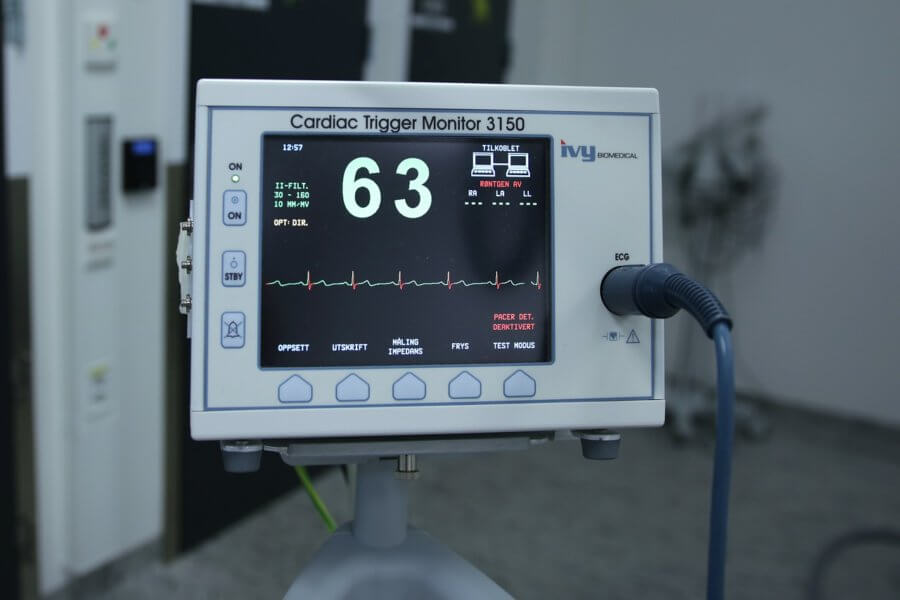What is alarm fatigue?
Alarm fatigue results when healthcare professionals are subjected to many frequent alarms, causing them to lose sensitivity to the alarms. Typically, individuals subjected to a series of alarms, primarily, intended to act as reminders to different patient situations such as patient intervention and evaluation are likely to miss crucial alarms, which may result in fatalities.
Commonly, alarm fatigue is caused by sustained sounds produced by alarms and noises generated from the machines an individual is operating, which may range from healthcare machines such as ventilators, heart monitors and blood pressure machines to mining industry machines and construction industry machines.
Subsequently, the sustained sounds occasion the brain to adjust to the trigger. Alarm fatigue affects health care providers such as nurses when the health care machines used to observe patients increasingly create a noisy environment, consequently triggering the healthcare providers to adjust to the stimulation. In the wake of stimulation adjustment, the healthcare providers are likely to ignore or respond reluctantly to some alarms.
The implications of alarm fatigue on the patient may include developing a vital sign abnormality and fatal arrhythmia, which may not be noticed by the healthcare providers as a result of the troubling the patient’s heart rhythm monitor initiated by false alarms. Vital signs constitute the evaluation of body temperature, pulse, respiration, oxygen saturation, and blood pressure.
These signs are important in determining the primary changes in the key physiological functioning of the patient, which should be monitored without fail as planned. On the other hand, fatal arrhythmia can be disastrous as it can compromise the role of the heart.
Some health organizations have compiled reports that show the significance of missed signs caused by alarm fatigue on mortality rate.
A particular report cited by the Food and Drug Administration shows that approximately 236 patients died as a result of alarm-related deaths between 2002 and 2004.
The results of the study are indicated in the graph below. A majority of fatalities emerged when healthcare providers missed critical alarms as a result of the too many alarms occurring within the healthcare environment.

Image courtesy of PSQH
| Recommended for you | |
| Hospitals to run like smart factories | |
| Digital health initiatives of top 5 hospitals of India | |
| Meet hygiene robots which clean hospitals without touching anything |
Innovative ways to slash alarm fatigue in hospitals
Many hospitals are now embracing innovations to help slash alarm fatigue. Currently, some of the developments considered by different health centers include central monitoring as applied in Cleveland Clinic, reducing clinically unimportant alerts as applied in Boston Medical Center, cleaning the equipment, deciding the order of alerts through the use of software and adjusting alarm parameters.
Central monitoring of alarms entails the designation of alarms at one particular place, monitored by a professional healthcare provider rather than at the bedside of each patient.
The alarms are then made to ring at the central monitoring location. In the event an alarm rings, the healthcare provider notifies the nurse responsible for a particular bed to respond appropriately. Central monitoring unit (CMU) is applied in the Cleveland Clinic where a CMU allocated away from beds helps in monitoring patients who are not in severe condition. The Cardiac telemetry monitoring system operates 24/7 and is installed in the main campus of the health care as well as in other three regional hospitals.
According to the Consult QD report, central monitoring of alarms has increased the accuracy detection rate from 79% to 84%. Moreover, the number of technicians needed to monitor patients has reduced, hence, helping save on costs and time.
Reducing clinically unimportant alerts helps solve the problem of alarm fatigue by decreasing the levels of noise in health centers.
A perfect example of this practice is apparent in Boston Medical Center where the hospital management has considered switching the thresholds for the cardiac monitor to “crisis” from the initial “warning”.
According to the statistics provided by the hospital, the daily alarm averages reduced significantly by 89% (12,546 to 1,424). Cleaning of alarm equipment can help resolve the problem of alarm fatigue by minimizing the chances of frequent alerts as a result of technical malfunctions. The electrodes of the alarm equipment should be checked and cleaned regularly and replaced where necessary for improved and sustained working.
Deciding the order of alerts through the use of software can help resolve the problem of alarm fatigue by boosting communication. Through the aid of intelligent software, nurses can effortlessly triage alarms, which enable them to receive alerts only when their services are urgently required. Adjusting alarm parameters can help resolve the problem of alarm fatigue by decreasing the amount of alarms.
Depending on the patient’s condition, the parameters of a device can be customized to give alerts only when the patient is in a critical condition, hence focusing primarily on the important medications that need trigger.
Today, a number of startups and healthcare companies are considering coming up with ideal solutions to issues relating to alarm fatigue to help enhance the quality of healthcare. Some of the startups offering specialized healthcare alarm services include MEDHOST EDIS and ADT Medical Alert Services.
MEDHOST EDIS provides a variety of services including CPOE, patient tracking, physician documentation, nurse charting and toolkit and robust reports. The company ensures that its clients enjoys an enhanced communication through flexible charting that expedites documentation, attains rapid adoption and improves clinical accuracy, built-in risk alleviation featuring automated risk alerts, notifications and visual cues that boosts patient safety and touch-screen design that allows for rich data capture.
In addition, MEDHOST EDIS offers one-touch order entry solution as well as easing the posting of wait time, which is displayed on electronic billboards and hospital website.
ADT Medical Alert System was launched to help seniors continue staying safe, independent and comfortable. The company offers services including professional monitoring, fast response time, waterproof and extended range. For fast response time, the patient can request for help by simply using the medical alert bracelet.
The medical alert system is GPS-based to offer enhanced support for most active users. The medical alert bracelet is completely waterproof, hence, can be used even while showering.
The age of smart hospitals
Alarm fatigue is truly a concern that needs to be professionally and innovatively addressed through the best means possible. By slashing alarm fatigue, health care centers and providers are admittedly improving the quality of services they deliver since there is improved communication and coordination between the bedside technicians and the care team.
Also, slashing alarm fatigue is enabling health care service providers to focus more on the critical and urgent issues without disregarding any procedure. This ensures that each matter is attended to and given the appropriate attention it deserves. Candidly, this is optimizing the quality of healthcare.
The introduction of digital, innovative solutions is prompting many hospitals to redesign their infrastructure effectively to accommodate the contemporary developments.
This is seeing most hospitals save on cost of hiring as well as time of operation. In addition, by embracing innovation and digital solutions, hospitals are finding a new, impressive face that not only attracts more customers but also potential investors.
Image credit: www.pixabay.com

















